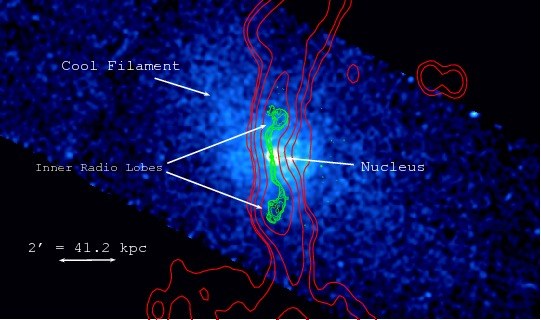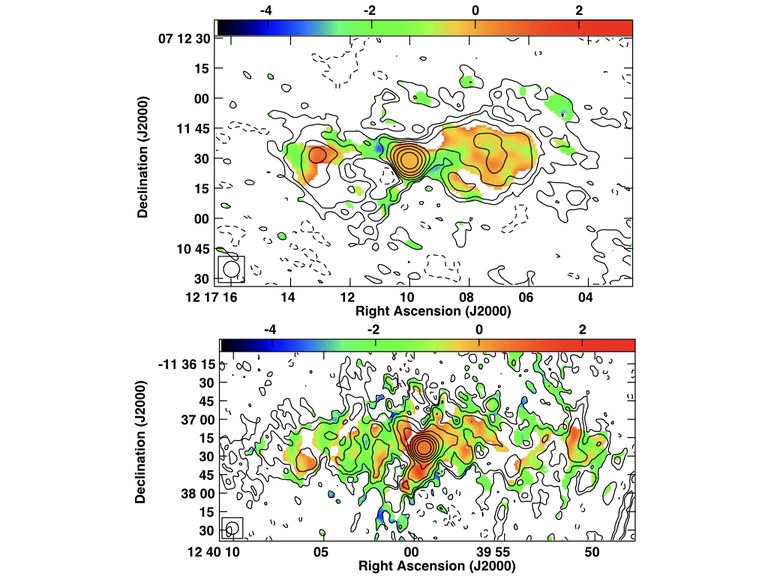Active Galactic Nuclei

(C. H. Ishwara-Chandra, Dharam Vir Lal, D. J. Saikia, Preeti Kharb)
These are galaxies where extremely energetic phenomena take place, driven by activity around the super-massive black holes at their centres. These result in the emission of enormous amounts of radiation in various wavebands, including the radio, making them observable out to very large distances in the Universe. Such objects are also often found in clusters of galaxies. The identification and detailed study of Compact Steep Spectrum and Gigahertz Peaked Spectrum sources, which constitute a significant fraction of such bright radio sources but are not well understood, are carried out at NCRA-TIFR. Research is also carried out on studies of giant radio sources, recurrent activity in radio galaxies, the interaction between radio plasma and the inter-cluster and intra-group media, radio halos and relics. Searches are also being carried out for radio galaxies at high redshifts, and efforts are under way to model their gaseous environments, at all redshifts.
Seyfert galaxies were first identified by Carl Seyfert in 1943 as those exhibiting star-like nuclei superimposed on the centers of spiral galaxies, along with peculiar emission line spectra showing the presence of strong narrow and broad emission lines. We now understand Seyfert galaxies to be one of the many manifestations of active galactic nuclei (AGN), which are actively accreting supermassive black holes. Sensitive radio observations have detected kiloparsec-scale radio structures (KSRs) or lobes in a large fraction of Seyfert galaxies. The origin of these KSRs is still debated: some studies have suggested them to be driven by starburst superwinds from the nuclei of spiral galaxies, while others have favoured an AGN-driven origin. Several large samples of Seyfert galaxies have been, and are currently being observed at low radio frequencies with the GMRT. Low radio frequency observations are not only detecting radio emission from the spiral galaxy disks themselves, "relic" lobe emission from previous AGN activity cycles, are also being detected in some Seyfert galaxies (see Figure; Kharb et al. 2016). Radio spectral studies are providing important constraints on the contributions of stellar versus AGN activity. On the one hand, low radio frequencies detect a larger fraction of host galaxy emission in these Seyferts, which contaminates the spectral index values of lobes, the detection of ``relic'' lobe emission strongly favours the AGN-driven origin for KSRs. We are also studying these Seyfert galaxies with the Very Long Baseline Interferometry (VLBI) technique using the Very Long Baseline Array (VLBA) in the US, and MERLIN in the UK. We are probing parsec-scale AGN jet emission with these studies, in order to finally construct a comprehensive picture of outflows in Seyfert galaxies.

The 325-610 MHz spectral index images in colour overlaid with 610 MHz radio contours from GMRT observations of NGC4235 (top panel) and NGC4594. The average spectral index is ~ -0.6 in the radio lobes and <= -1.8 in the ``relic'' lobe surrounding the western lobe of NGC4235. The average spectral index is +0.3 for the southern lobe of NGC4594. This estimate is likely to be contaminated by galactic emission. The galaxy disk spectral index is ~ 1.2 (Kharb et al. 2016, MNRAS, 459, 1310).
Document Actions
